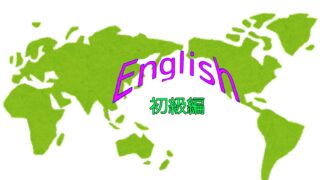朝のニュースで「政府が緊縮財政を発表」と聞いたとき、本当に何がどう変わるのか説明できますか?
そのニュースがもし英語で書かれていたら、読み解く自信はありますか?
『英語長文問題で読み解く経済政策-30』は、そんなあなたのために生まれた一冊です。
本書には、財政政策・金融政策・インフラ整備から環境・エネルギー政策、地方創生まで、経済政策の核心をなす30のテーマが厳選されています。各問題は、TOEIC・TOEFL・英検レベルを想定した本格的な英語長文問題で構成され、実際の政策文書や国際機関レポートに近いリアルな表現と語彙を体験しながら学べます。
そんな、英検2級レベルの英語長文問題を読み解きながら、経済政策の基本的な知識を身につけることが出来る問題集をkindleにて出版しました!

英語長文問題で読み解く経済政策-30: 経済政策の重要テーマを英語で読み解く 英語長文問題で読み解く学問シリーズ
これまでに発売した英語の長文問題集の一覧はコチラから!
英語長文で読み解く経済政策-30 の中身を公開!
以下、どのような内容になっているのかを公開します!
目次
はじめに
1.財政政策 :政府の歳出と税制を通じて経済活動を調整する政策。
2.金融政策 :中央銀行が金利や通貨供給量を操作して経済全体の資金供給を管理する施策。
3.緊縮財政 :政府の財政赤字削減を目的に、歳出削減や増税を行う政策。
4.需要刺激策 :政府支出の拡大や減税などで総需要を喚起し、経済活動を促進する施策。
5.供給側改革 :企業の生産性向上や投資環境の整備を通じ、経済の潜在能力を高める政策。
6.社会保障政策 :福祉制度や失業保険、年金など、国民の生活を支える政策全般。
7.産業政策 :特定産業の競争力強化を目的に、補助金、税制優遇、規制緩和などを行う政策。
8.貿易政策 :関税、輸出入規制、自由貿易協定など、国際貿易のルールを定める政策。
9.保護貿易 :国内産業を守るため、輸入制限や高関税を設定する政策。
10.為替政策 :通貨価値の安定や競争力確保のため、為替介入などで為替レートを調整する施策。
11.外国直接投資促進 :外資の誘致や投資環境の整備により、経済成長や技術移転を促す政策。
12.賃金政策 :最低賃金の引き上げや労働組合との協議を通じ、労働者の所得改善を図る施策。
13.競争政策 :市場の独占やカルテルを防ぎ、健全な競争を促すための法整備や監視体制。
14.研究開発支援 :技術革新を促進するため、企業や大学への助成金・税制優遇措置を提供する施策。
15.環境政策 :環境保護と経済成長の両立を目指し、炭素税や排出権取引などを導入する政策。
16.持続可能な発展 :経済成長と環境保全、社会的公正を同時に達成する長期的な政策目標。
17.インフラ整備 :交通、通信、エネルギーなど基盤設備への投資で、経済活動を支える政策。
18.財政赤字削減 :政府の支出と収入の不均衡を是正し、持続可能な財政運営を目指す政策。
19.所得再分配政策 :税制や社会保障を通じて所得格差を是正し、社会的平等を促進する政策。
20.最低賃金政策 :労働者の最低所得を保障するため、法的に最低賃金を定める措置。
21.規制改革 :市場のイノベーションや競争促進のため、過度な規制を見直す政策。
22.デジタルトランスフォーメーション :ICTの活用により、産業や行政の効率化、経済構造の革新を進める施策。
23.イノベーション政策 :新技術・新産業の育成を通じて、長期的な経済成長を促す戦略。
24.リスク管理 :経済危機や市場変動に備えて、金融機関や政府がリスクを予防・軽減する対策。
25.ビジネスサイクル政策 :景気拡大・収縮に応じた柔軟な政策運営で、経済の安定を図る施策。
26.金融緩和 :低金利政策や量的緩和を通じて市場に流動性を供給し、経済活動を刺激する措置。
27.金融引き締め :インフレーション抑制を目的に、金利の引き上げや通貨供給の制限を行う政策。
28.貿易交渉 :国際的な貿易協定を締結し、関税や非関税障壁の解消を目指す外交的施策。
29.エネルギー政策 :エネルギー供給の安定性と持続可能性を確保するため、再生可能エネルギーの促進やエネルギー市場の自由化を図る。
30.地方創生 :地域経済の活性化を目指し、地方自治体への支援やインフラ整備、産業振興を通じた政策施策。
1.財政政策 :政府の歳出と税制を通じて経済活動を調整する政策。
Fiscal Policy: The Government’s Economic Toolbox
Fiscal policy represents one of the most important tools governments use to influence their economies. Unlike monetary policy, which is typically managed by a country’s central bank through interest rates and money supply, fiscal policy falls directly under the control of government officials. It involves the use of government spending and taxation to guide economic conditions toward desired outcomes such as stable growth, low unemployment, and controlled inflation.
The Basic Mechanisms of Fiscal Policy
At its core, fiscal policy works through two primary channels: government expenditure and taxation. When a government increases its spending on public works, social programs, or other initiatives, it injects money into the economy. This additional spending creates demand for goods and services, which can stimulate economic activity. For example, when a government invests in infrastructure projects like building bridges or highways, it creates jobs for construction workers, increases demand for building materials, and improves transportation efficiency for businesses.
On the other hand, taxation removes money from the economy. When governments raise taxes, households and businesses have less money to spend or invest, which can slow economic activity. Conversely, when governments reduce taxes, people and businesses have more disposable income, which can boost consumer spending and business investment.
Expansionary and Contractionary Fiscal Policy
Fiscal policy can be either expansionary or contractionary, depending on economic conditions and government goals. Expansionary fiscal policy aims to stimulate economic growth during downturns or recessions. This approach involves increasing government spending, cutting taxes, or both. For instance, during the 2008-2009 global financial crisis, many governments implemented expansionary fiscal policies. The United States passed the American Recovery and Reinvestment Act of 2009, which included approximately $800 billion in increased government spending and tax cuts to stimulate economic recovery.
Contractionary fiscal policy, in contrast, seeks to slow down an overheating economy or reduce inflation. This approach involves decreasing government spending, increasing taxes, or both. For example, after World War II, many countries implemented contractionary fiscal policies to reduce the high inflation that had built up during the war years.
Fiscal Policy and the Business Cycle
One of the key aims of fiscal policy is to moderate the business cycle—the natural fluctuations in economic activity that occur over time. During recessions, when economic output declines and unemployment rises, governments often implement expansionary fiscal policies to stimulate growth. During periods of economic expansion, especially when inflation threatens, governments may implement contractionary fiscal policies to prevent the economy from overheating.
This approach, known as countercyclical fiscal policy, aims to smooth out the peaks and troughs of the business cycle. The goal is to maintain steady economic growth, stable prices, and high employment over time. For example, during the COVID-19 pandemic, governments worldwide implemented unprecedented expansionary fiscal policies, including direct payments to citizens, enhanced unemployment benefits, and business support programs, to counter the severe economic downturn caused by lockdowns and reduced economic activity.
Budget Deficits and Surpluses
When a government spends more than it collects in taxes, it runs a budget deficit. To finance this deficit, the government must borrow money, typically by issuing government bonds. When a government collects more in taxes than it spends, it runs a budget surplus, which can be used to pay down existing debt.
Budget deficits and government debt are not inherently problematic. In fact, they can be beneficial during economic downturns. However, persistent large deficits can lead to high levels of government debt, which may eventually become unsustainable. High debt levels can lead to higher interest payments, reducing the government’s ability to spend on other priorities. They can also potentially lead to higher interest rates throughout the economy, crowding out private investment.
For example, Japan has maintained budget deficits for decades, resulting in a public debt that exceeds 260% of its GDP—the highest ratio among developed nations. Despite this high debt level, Japan has managed to maintain relatively low interest rates, partly due to high domestic savings rates and the central bank’s policies.
Automatic Stabilizers
Not all fiscal policy requires active government decision-making. Some fiscal mechanisms, known as automatic stabilizers, respond automatically to changes in economic conditions. For instance, during economic downturns, tax revenues naturally decrease as incomes fall, while government spending on programs like unemployment benefits automatically increases. These automatic responses help to counter economic fluctuations without requiring new legislation.
In the United States, for example, unemployment insurance provides temporary financial assistance to workers who lose their jobs. During recessions, more people become eligible for these benefits, automatically increasing government spending and providing economic support precisely when it’s needed most.
Limitations and Challenges of Fiscal Policy
While fiscal policy can be a powerful tool for economic management, it faces several challenges and limitations. One significant challenge is timing. It takes time to recognize economic problems, develop appropriate fiscal responses, implement those responses, and for those responses to affect the economy. This lag can sometimes mean that fiscal policy measures take effect too late, potentially exacerbating rather than solving economic problems.
Political considerations also complicate fiscal policy. Decisions about government spending and taxation are inherently political, involving trade-offs between different priorities and interest groups. This can make it difficult to implement optimal fiscal policies from a purely economic perspective.
Additionally, the effectiveness of fiscal policy can be limited by factors such as the openness of an economy, the behavior of consumers and businesses, and the state of public finances. For example, if consumers expect tax cuts to be temporary, they might save rather than spend the additional disposable income, reducing the stimulative effect of the tax cut.
Conclusion
Fiscal policy represents a crucial tool in the government’s economic toolbox. By adjusting spending and taxation, governments can influence economic conditions, moderate the business cycle, and work toward goals such as full employment and price stability. However, the effectiveness of fiscal policy depends on many factors, including timing, political considerations, and the specific economic circumstances of a country. Understanding these complexities is essential for evaluating and implementing effective fiscal policies in the real world.
注釈
Fiscal policy (財政政策) – 政府が経済に影響を与えるために支出と税金を調整する政策
Monetary policy (金融政策) – 中央銀行が金利や通貨供給量を通じて経済を調整する政策
Inflation (インフレーション) – 物価の全般的な上昇
Expenditure (支出) – お金を使うこと、特に政府がサービスや物品に使うお金
Disposable income (可処分所得) – 税金を支払った後に残る、自由に使えるお金
Expansionary fiscal policy (拡張的財政政策) – 経済を刺激するために政府支出を増やしたり税金を減らしたりする政策
Contractionary fiscal policy (緊縮財政政策) – 経済の過熱を抑えるために政府支出を減らしたり税金を増やしたりする政策
Business cycle (景気循環) – 経済活動が時間とともに自然に変動するパターン
Countercyclical fiscal policy (反循環的財政政策) – 景気循環の山と谷を平準化するために用いられる財政政策
Budget deficit (財政赤字) – 政府の支出が税収を上回る状態
Budget surplus (財政黒字) – 政府の税収が支出を上回る状態
Government bonds (国債) – 政府が資金を借りるために発行する債券
GDP (Gross Domestic Product) (国内総生産) – 国の経済活動の総価値を表す指標
Automatic stabilizers (自動安定化装置) – 経済状況の変化に自動的に反応する財政メカニズム
Unemployment benefits (失業給付) – 仕事を失った人に一時的に支払われる政府からの援助
Questions:
What is the main difference between fiscal policy and monetary policy?
A) Fiscal policy is controlled by the central bank, while monetary policy is controlled by the government.
B) Fiscal policy involves government spending and taxation, while monetary policy involves interest rates and money supply.
C) Fiscal policy only affects businesses, while monetary policy affects the entire economy.
D) Fiscal policy is only used during recessions, while monetary policy is used during economic growth.
Which of the following is an example of expansionary fiscal policy?
A) Increasing interest rates
B) Reducing government spending on social programs
C) Increasing taxes on businesses
D) Increasing government spending on infrastructure projects
During the 2008-2009 global financial crisis, what action did the United States take regarding fiscal policy?
A) Implemented contractionary fiscal policy
B) Maintained a balanced budget
C) Passed a law that included increased government spending and tax cuts
D) Drastically reduced government spending on all programs
What is the primary goal of countercyclical fiscal policy?
A) To increase government debt
B) To smooth out the peaks and troughs of the business cycle
C) To eliminate all economic fluctuations
D) To increase tax revenue during economic downturns
What happens when a government runs a budget deficit?
A) It must increase taxes immediately
B) It must cut all government spending
C) It must borrow money, typically by issuing government bonds
D) It leads to immediate economic collapse
Which country is mentioned in the passage as having the highest public debt ratio among developed nations?
A) United States
B) Japan
C) United Kingdom
D) Germany
What are automatic stabilizers?
A) Devices that physically stabilize government buildings during earthquakes
B) Fiscal mechanisms that respond automatically to changes in economic conditions
C) Laws that prevent governments from changing tax rates
D) International agreements that stabilize currency exchange rates
According to the passage, what is one significant challenge of fiscal policy?
A) It can only be used during periods of economic growth
B) It requires cooperation from all countries globally
C) It can take time to implement and affect the economy
D) It only works in developed economies
How might consumers respond to tax cuts they expect to be temporary?
A) They might save rather than spend the additional disposable income
B) They might immediately spend all the additional income
C) They might invest all the additional income in government bonds
D) They might donate all the additional income to charity
What was the fiscal policy response to the COVID-19 pandemic according to the passage?
A) Governments implemented contractionary fiscal policies
B) Governments maintained balanced budgets
C) Governments implemented unprecedented expansionary fiscal policies
D) Governments reduced all types of public spending
解答・解説
Question 1:
財政政策と金融政策の主な違いは何ですか?
A) 財政政策は中央銀行によって管理され、金融政策は政府によって管理される。
B) 財政政策は政府支出と税金を含み、金融政策は金利と通貨供給量を含む。
C) 財政政策は企業のみに影響し、金融政策は経済全体に影響する。
D) 財政政策は不況時にのみ使用され、金融政策は経済成長時に使用される。
正解: B
解説: 本文の冒頭部分で説明されています。「金融政策は通常、国の中央銀行によって金利や通貨供給量を通じて管理されますが、財政政策は政府の支出と税金を通じて経済状況に影響を与えるため、政府関係者の直接的な管理下にあります。」このように、財政政策は政府支出と税金を扱い、金融政策は金利と通貨供給量を扱うことが明確に述べられています。
Question 2:
以下のうち、拡張的財政政策の例はどれですか?
A) 金利の引き上げ
B) 社会プログラムへの政府支出の削減
C) 企業への増税
D) インフラプロジェクトへの政府支出の増加
正解: D
解説: 本文の「拡張的財政政策と緊縮財政政策」のセクションで、「拡張的財政政策は、景気後退時に経済成長を刺激することを目的としています。このアプローチには、政府支出の増加、減税、またはその両方が含まれます。」と説明されています。選択肢Dのインフラプロジェクトへの政府支出の増加は、明らかに拡張的財政政策の例です。他の選択肢はいずれも拡張的財政政策の例ではありません。
Question 3 :
2008-2009年の世界金融危機の際、アメリカはどのような財政政策の行動をとりましたか?
A) 緊縮財政政策を実施した
B) 均衡予算を維持した
C) 政府支出の増加と減税を含む法律を可決した
D) すべてのプログラムに対する政府支出を大幅に削減した
正解: C
解説: 本文では、「2008-2009年の世界金融危機の間、多くの政府は拡張的財政政策を実施しました。アメリカは2009年アメリカ復興再投資法を可決し、これには経済回復を刺激するための約8000億ドルの政府支出増加と減税が含まれていました。」と明確に述べられています。これは選択肢Cに直接対応しています。
Question 4 :
反循環的財政政策の主な目的は何ですか?
A) 政府債務を増やすこと
B) 景気循環の山と谷を平準化すること
C) すべての経済変動を排除すること
D) 経済不況時に税収を増やすこと
正解: B
解説: 本文の「財政政策と景気循環」のセクションで、「このアプローチは反循環的財政政策として知られ、景気循環の山と谷を平準化することを目的としています。目標は、時間の経過とともに安定した経済成長、安定した物価、高い雇用を維持することです。」と説明されています。このことから、反循環的財政政策の主な目的は選択肢Bの「景気循環の山と谷を平準化すること」であることがわかります。
Question 5:
政府が財政赤字を抱えるとき、何が起こりますか?
A) 直ちに増税しなければならない
B) すべての政府支出を削減しなければならない
C) 通常、国債を発行することでお金を借りなければならない
D) 即座に経済崩壊につながる
正解: C
解説: 本文の「財政赤字と黒字」のセクションで、「政府が税金で集めるよりも多くのお金を使うとき、財政赤字が発生します。この赤字を賄うために、政府はお金を借りなければなりません。通常、それは国債を発行することによって行われます。」と明確に説明されています。したがって、政府が財政赤字を抱えるとき、選択肢Cの「通常、国債を発行することでお金を借りなければならない」が正解です。
と、このような感じで、30問の長文問題が一冊にまとまっております!
経済政策の重要テーマ、30問あります!
目次にもあるように、30個の経済政策にまつわる重要テーマやキーワードを使い、長文問題を作りました。
たとえば、ある日あなたは「量的緩和」の英文記事に挑戦します。背景にある中央銀行の意図を理解するため、本書で身につけた「金融政策」の知識を思い出しながら読み進める。すると単なる語学学習が、世界のマクロ経済を多角的に読み解く知的探求へと変わる瞬間を味わえるのです。
本書で得られる3つの力
- 実践的な英語読解力:経済レポート特有の構造や専門語彙をマスターし、グローバルな情報をダイレクトに理解。
- 政策分析力:各問題ごとのテーマで「なぜ」「どのように」政策が機能するのか、自らの言葉で説明できる。
- 多角的視点:習得した知識を基に、国内外の経済ニュースや議論をさまざまな角度から俯瞰し、洞察力を養成。
これから経済学部を目指す学生、ビジネスパーソン、国際機関や外資系企業への就職を考えるあなたにも、最適な一冊です。限られた学習時間を最大限に活かし、語学と専門知識の両輪で未来を切り拓いてください。
英語力を向上させたい、かつ、経済政策の知識を得たい人にとって、最適な長文問題集となっております。
タイパを重視して、経済政策の知識を得つつ、英語の読解力を向上させたい人は、ぜひ活用してみてください。

英語長文問題で読み解く経済政策-30: 経済政策の重要テーマを英語で読み解く 英語長文問題で読み解く学問シリーズ
これまでに発売した英語の長文問題集の一覧はコチラから!
#英語 #リーディング力 #読解力 #多読 #多読用教材 #英検対策 #Kindle出版 #Kindle電子書籍 #Kindleペーパーバック #アマゾン #英語力 #英語長文問題で読み解く学問シリーズ #経済政策





-320x180.jpg)





コメント